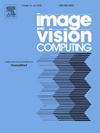Privacy-preserving explainable AI enable federated learning-based denoising fingerprint recognition model
IF 4.2
3区 计算机科学
Q2 COMPUTER SCIENCE, ARTIFICIAL INTELLIGENCE
引用次数: 0
Abstract
Most existing fingerprint recognition methods are based on machine learning and often overlook the privacy and heterogeneity of data when training on large datasets, leading to user information leakage and decreased recognition accuracy. To collaboratively optimize model accuracy under privacy protection, a novel fingerprint recognition algorithm based on artificial intelligence enable federated learning-based Fingerprint Recognition, (AI-Fed-FR) is proposed. First, federated learning is used to iteratively aggregate parameters from various clients, thereby improving the performance of the global model. Second, Explainable AI is applied for denoising low-quality fingerprint images to enhance fingerprint texture structure. Third, to address the fairness issue caused by client heterogeneity, a client scheduling strategy based on reservoir sampling is proposed. Finally, simulation experiments are conducted on three real-world datasets to analyze the effectiveness of AI-Fed-FR. Experimental results show that AI-Fed-FR improves accuracy by 5.32% compared to local learning and by 8.56% compared to the federated averaging algorithm, achieving accuracy close to centralized learning. This study is the first to demonstrate the feasibility of combining federated learning with fingerprint recognition, enhancing the security and scalability of fingerprint recognition algorithms and providing a reference for the application of federated learning in biometric technologies.
求助全文
约1分钟内获得全文
求助全文
来源期刊

Image and Vision Computing
工程技术-工程:电子与电气
CiteScore
8.50
自引率
8.50%
发文量
143
审稿时长
7.8 months
期刊介绍:
Image and Vision Computing has as a primary aim the provision of an effective medium of interchange for the results of high quality theoretical and applied research fundamental to all aspects of image interpretation and computer vision. The journal publishes work that proposes new image interpretation and computer vision methodology or addresses the application of such methods to real world scenes. It seeks to strengthen a deeper understanding in the discipline by encouraging the quantitative comparison and performance evaluation of the proposed methodology. The coverage includes: image interpretation, scene modelling, object recognition and tracking, shape analysis, monitoring and surveillance, active vision and robotic systems, SLAM, biologically-inspired computer vision, motion analysis, stereo vision, document image understanding, character and handwritten text recognition, face and gesture recognition, biometrics, vision-based human-computer interaction, human activity and behavior understanding, data fusion from multiple sensor inputs, image databases.
 求助内容:
求助内容: 应助结果提醒方式:
应助结果提醒方式:


